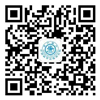With the development of in-vehicle data collection devices, GPS trajectory has become a priority source to identify traffic congestion and understand the operational states of road network in recent years. This study aims to investigate the relationship between traffic congestion and built environment, including traffic-related factors and land use. Fuzzy C-means clustering was used to conduct an exhaustive study on the 24-hour congestion pattern of road segments in an urban area, so that the spatial autoregressive moving average model (SARMA) could be introduced to analyze the output from the clustering analysis to establish the relationship between built environment and the 24-hour congestion pattern. The clustering result classified the road segments into four congestion levels, while the regression explained the impact of 12 traffic-related factors and land-use factors on the road congestion pattern. The continuous congestion was found to mainly occur in the city center, and the factors, such as road type, bus station in the vicinity, ramp nearby, commercial land use, and so on, had large impacts on congestion formation. The Fuzzy C-means clustering is proposed to be combined with quantitative spatial regression, and the overall evaluation process will assist to assess the spatial-temporal levels of service regarding traffic from the congestion perspective.
![]() Analyzing spatiotemporal congestion pattern on urban roads based on taxi GPS data.pdf
Analyzing spatiotemporal congestion pattern on urban roads based on taxi GPS data.pdf
地址:上海市徐汇区华山路1954号新建楼 邮箱:ciug@sjtu.edu.cn 电话:021-62934788 邮编:200030
版权所有©上海交通大学中国城市治理研究院 沪交ICP备20170055

公众号
二维码
